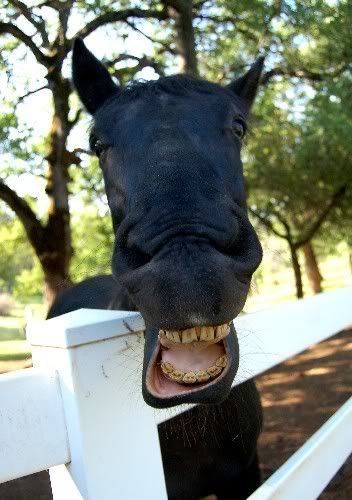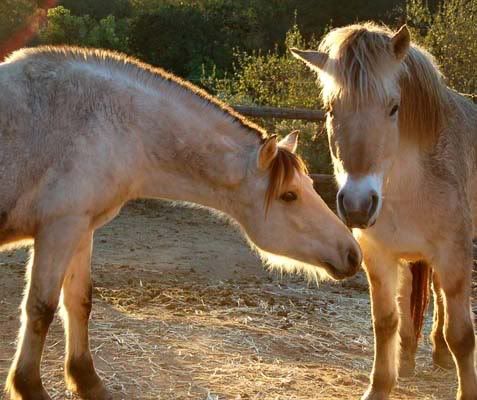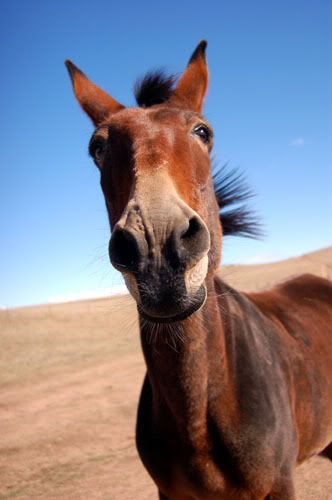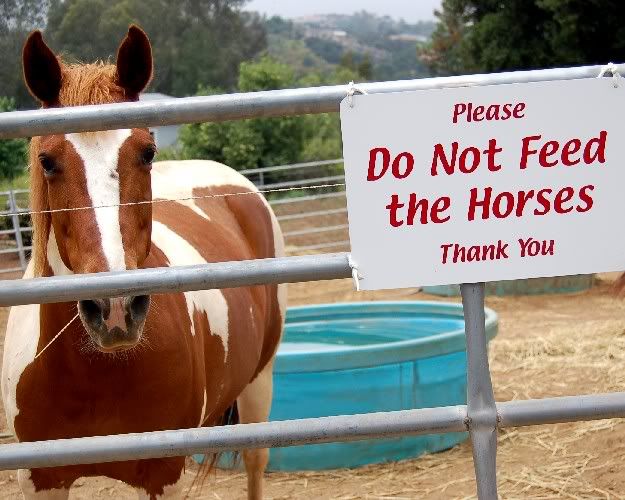Your earliest memory of being around horses might be like mine, when a family member told me how to offer a horse a treat while holding my hand flat to avoid having my fingers bitten.
Nobody gives much thought to how the horse perceives these interactions with people.
It seems to be general knowledge that horses can become pushy and nippy when fed treats, but what else happens that can impact your overall relationship with your horse?
When a horse approaches a human offering a treat, they shift their weight onto the forehand to reach for the goody that is offered. Very quickly the horse is conditioned to get heavy on their forehand any time they are around people, with or without a treat.
The horse will likely start to crowd to investigate the human to see if there is something good to eat hidden somewhere. If you have been to any public stable or horse show you have seen a horse frisk a person over. Generally this crowding results in the handler moving out of the way. The horse develops a comfort zone right there up close to a person, heavy on their front end, with an understanding that the human will yield to them.
Do a little experiment, especially if you hand feed your horses, or other horses. See how many times the horse moves you around, you may need an outside observer to count for you. If you don't have a horse, try this with your pet dog, cat, goat, cow, etc. Observe their behavior when (if) they are hand fed. Do they very respectfully stay out of your space or do they start to hover and crowd unless reminded to back off?
When does that become a problem?
Any time the horse gets startled or upset they will likely seek out their comfort zone. If that comfort zone is right in the lap of their handler then that is where they will go (because they have been trained through hand feeding to go there) and they will likely bump into or run over that person in the process (because they know the handler will move out of their way). These little things are very significant to the horse.
Where has this horse shifted her weight in relation to the handler?
She is leaning and braced on the forehand, with her front foot nearest the handler bearing the most weight. With an adjustment in handling her manners improved 100%
This is a great article on hand feeding horses that I encourage anyone to read: Hand Feeding As the article points out, here are some common problems associated with hand feeding:
Pushing people with their shoulder
Rubbing or bumping people with their head
Nibbling and Biting
Crowding the gate
Refusing to be caught without bribery
Refusing to lead
Diving for grass
Impatience or pulling back at the tie rail
Pawing
Stepping on people's feet
Difficult to halter and bridle
Chewing on equipment
Difficult to clip
Difficult to pick up feet
Pushy at feeding time
Misbehaving for vet and farrier
Difficult to load in a trailer
Moving while mounted
Moving rather than standing patiently under saddle
Striking, Kicking, Rearing
Slow to stop or turn under saddle
and the list goes on...
But what if you love giving your horses treats?
Well you can still do that, just stay away from hand feeding or holding a bucket while the horse eats. Try tossing treats into the horse's feeder or out on the ground for them. You may find that they enjoy receiving treats that way even more.
As you get away from hand feeding and the associated pattern of horses leaning and crowding, you will find that your horse's behavior improves dramatically. Refraining from hand feeding may be the most profound "quick fix" out there, and takes very little effort on the part of the handler.
If you are at the mercy of a boarding barn where you have little control over others that may feed your horse when you are away sometimes talking to a manager, other boarders, or putting up signs will help discourage people from offering your horse handouts.
Be careful out there
If you board in a situation where there is more than one horse out together be aware that some of those horses may expect people to arrive with treats in hand. Those horses may run another horse right over the top of you in their desire to come crowd and investigate. It may not be safe to walk out into a bunch of horses like this while carrying feed or something resembling feed. Always be aware of yourself and don't hesitate to ask horses to move away and allow a safe distance as you go through their living area.












But, I want them to crowd me!
ReplyDeleteI do know what you mean(I have very food oriented goats-luckily they're small or I would have been trampled to death long ago) but I use food to get my ponies to like being close to me. It's not a free-for-all-of-food either. It's a click and treat. And no grabbing for food or I walk away.
So hand feeding is useful for me since mine don't like any scratches or pets that I can find. (PTSD Pony acts like I'm prepping to kill her and Horsie worries about beatings? Something taught him touch=bad. Which has made me think that's something I need to work on right now. Duh.)
Sorry to go on-I tried to keep up with your postings at Fugs Free Speech Board-loved the pics and training. I'm glad you have a blog of your own.
Ah but you can still do clicker training and other types of similar training that use food rewards without ever hand feeding. Or you can look into methods like SynAlia that use voice commands without the treats.
ReplyDeleteNow I'm off to look up SynAlia....thanks!
ReplyDeleteDeb is that you? LOL. I get a lecture every time I hand feed treats to Truffles. I know better than to do it with the horses, but I just can't help myself with the cow. So to the list of common problems associated with hand feeding, please add: bovine (attempted) rape, climbing gates, walking through fences, charging/bucking/snorting. And I'll tell Deb it's now two against one in his favor.
ReplyDeleteI'm confused about this part . . .
ReplyDelete"When a horse approaches a human offering a treat, they shift their weight onto the forehand to reach for the goody that is offered. Very quickly the horse is conditioned to get heavy on their forehand any time they are around people, with or without a treat. "
Naturally horses carry more of their weight on their forehand because of the weight of the head and neck . . . and horses lazing around the pasture are more than likely moving around on their forehand regardless of if they are fed treats or not (right?). Humans teach horses to shift their balance back and use their haunches, but don't Grand Prix horses resort to moving around on the forehand when they are in the pasture? Or do they carry their new balance into everyday life?? I'm asking genuinely because this is something I hadn't thought of before. The only time I think I've ever seen a horse shift it's weight to the hindquarters is when stallions are showing off or mock fighting. What am I missing? I agree with most everything else you said, although some of the things in your list don't make sense to me, but I'm pretty sure once I have the answer to this question those will be clearer as well. Thanks!